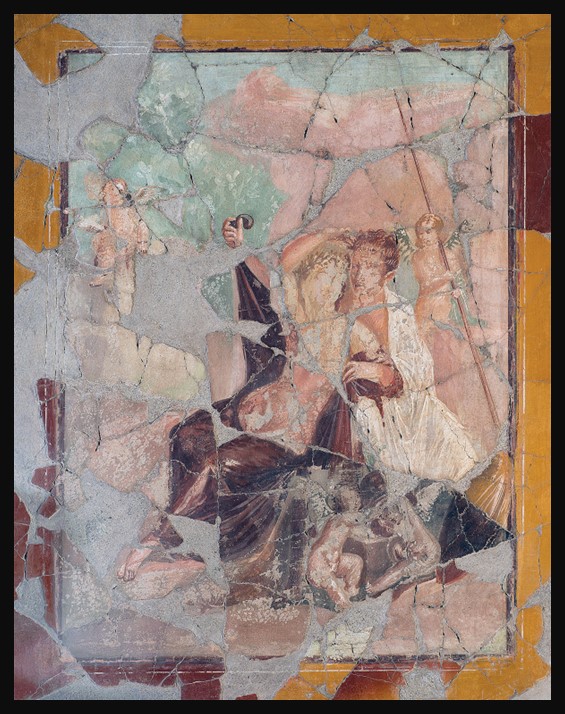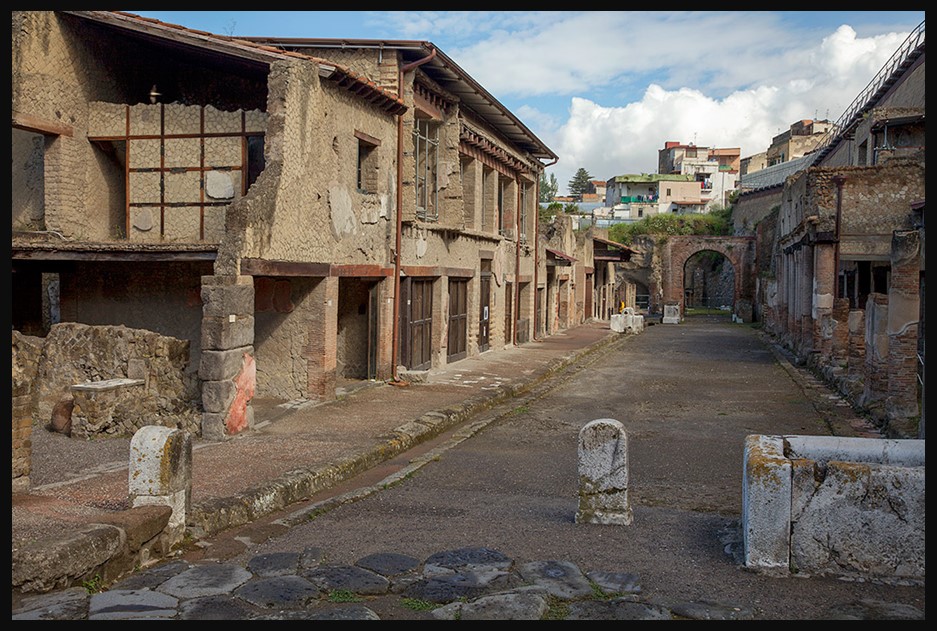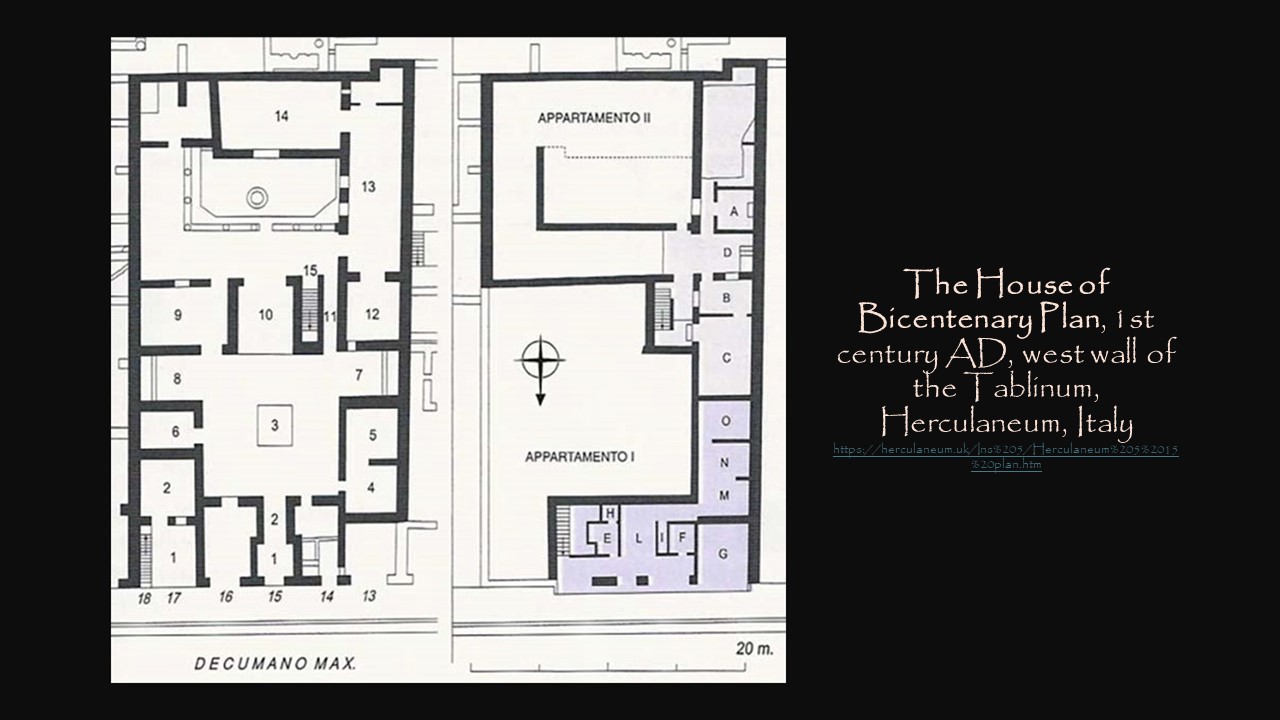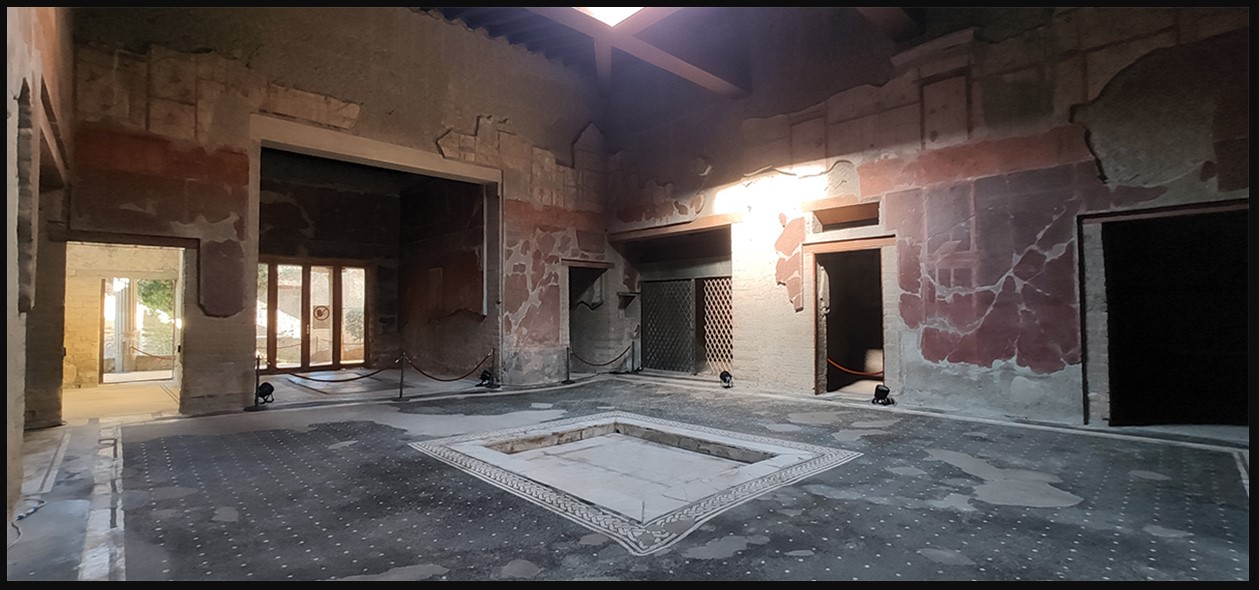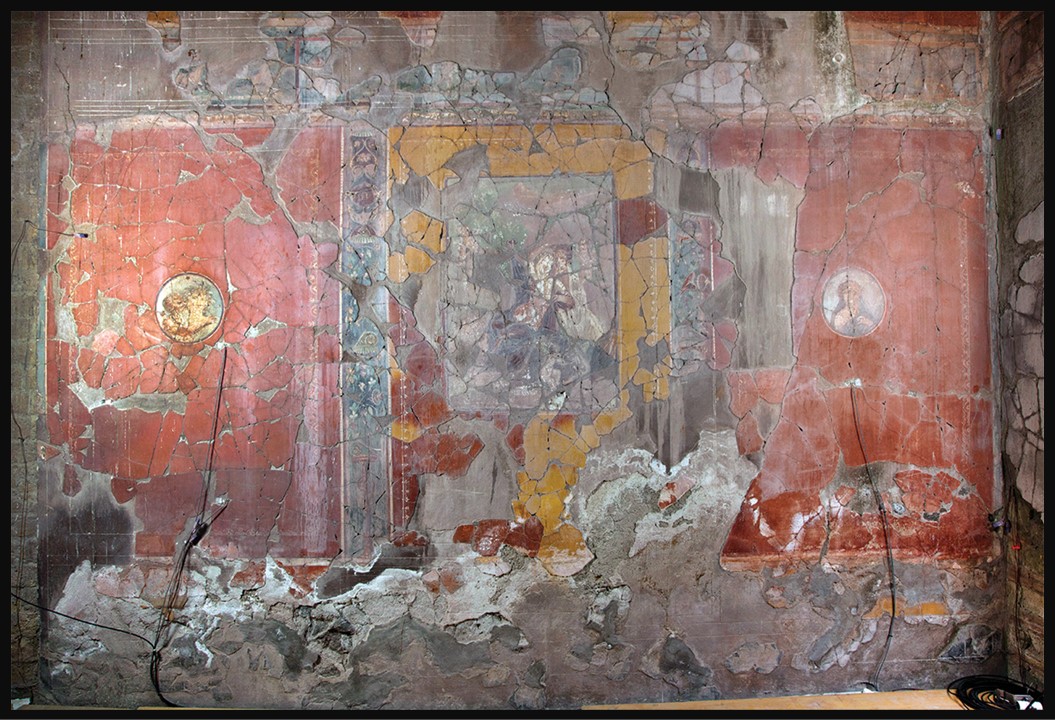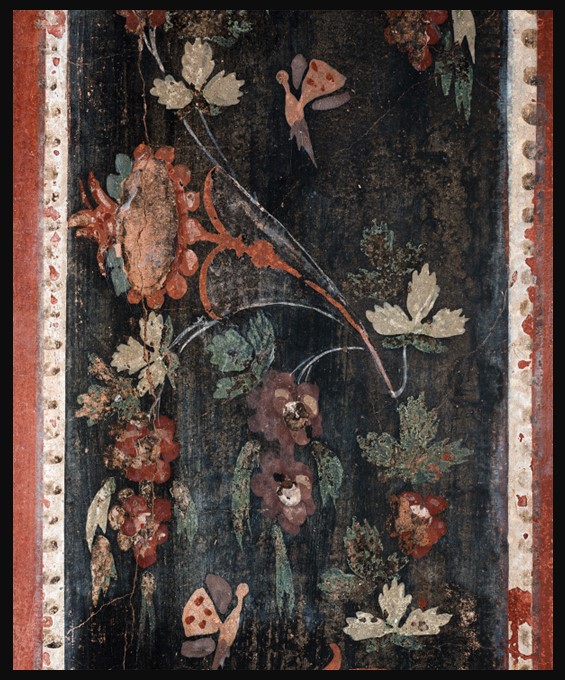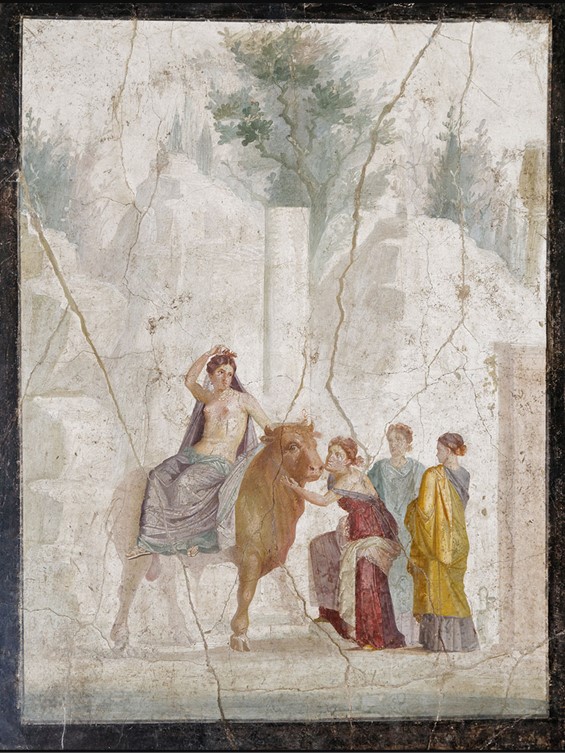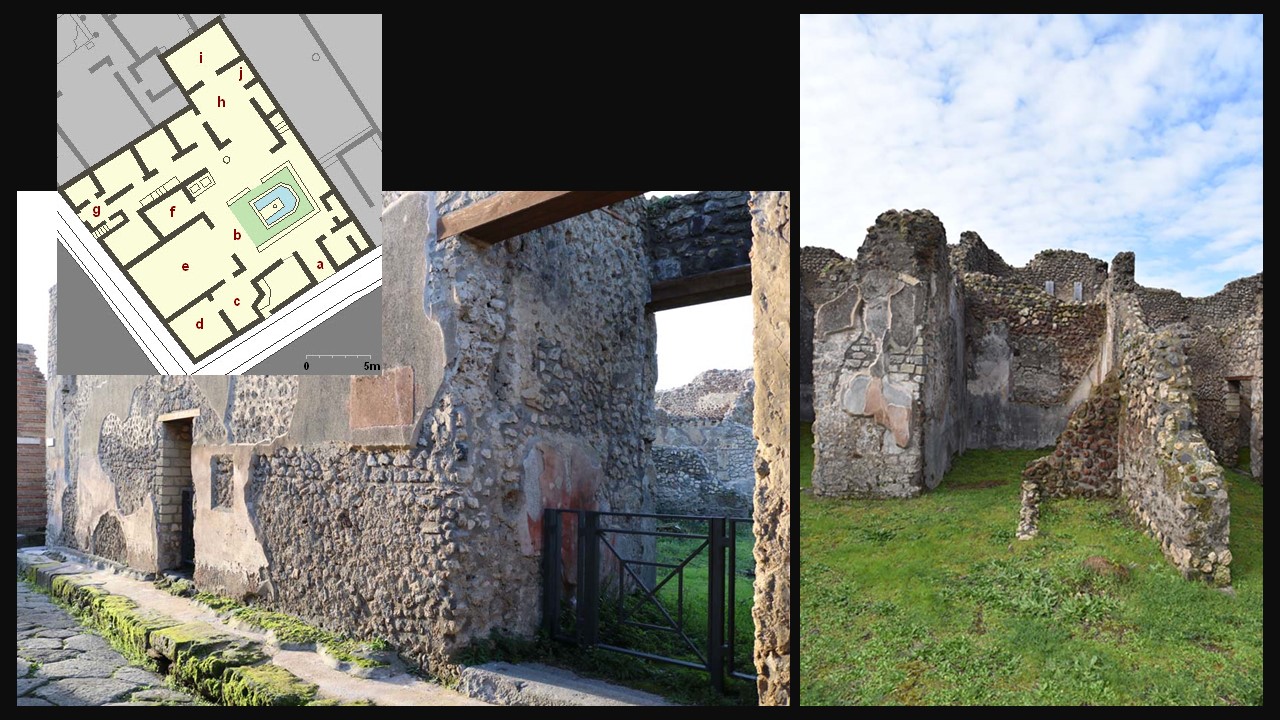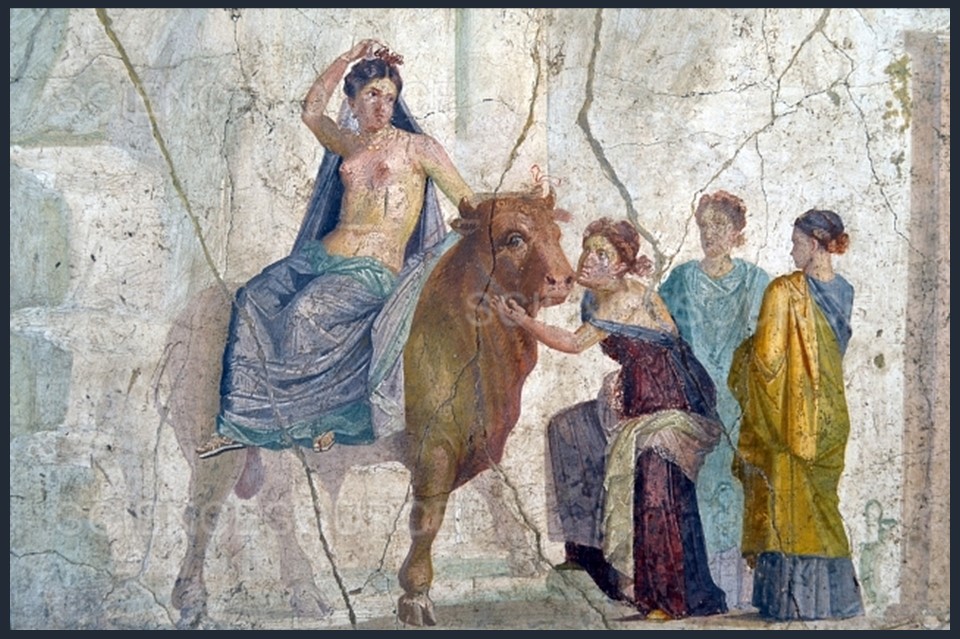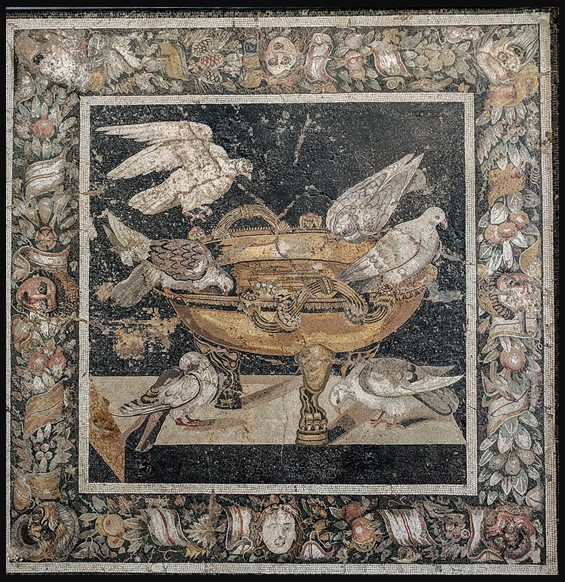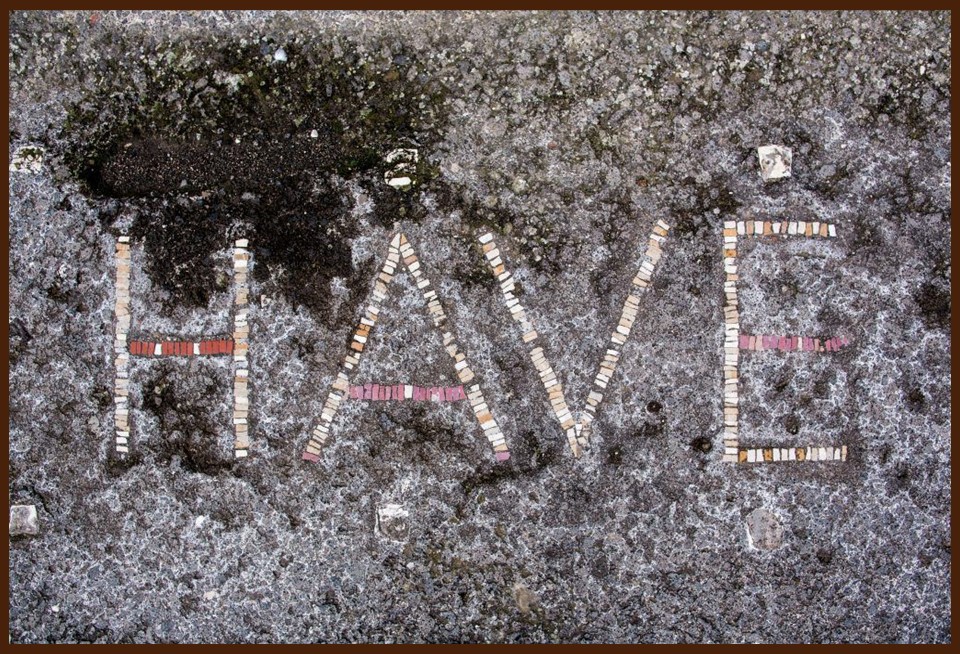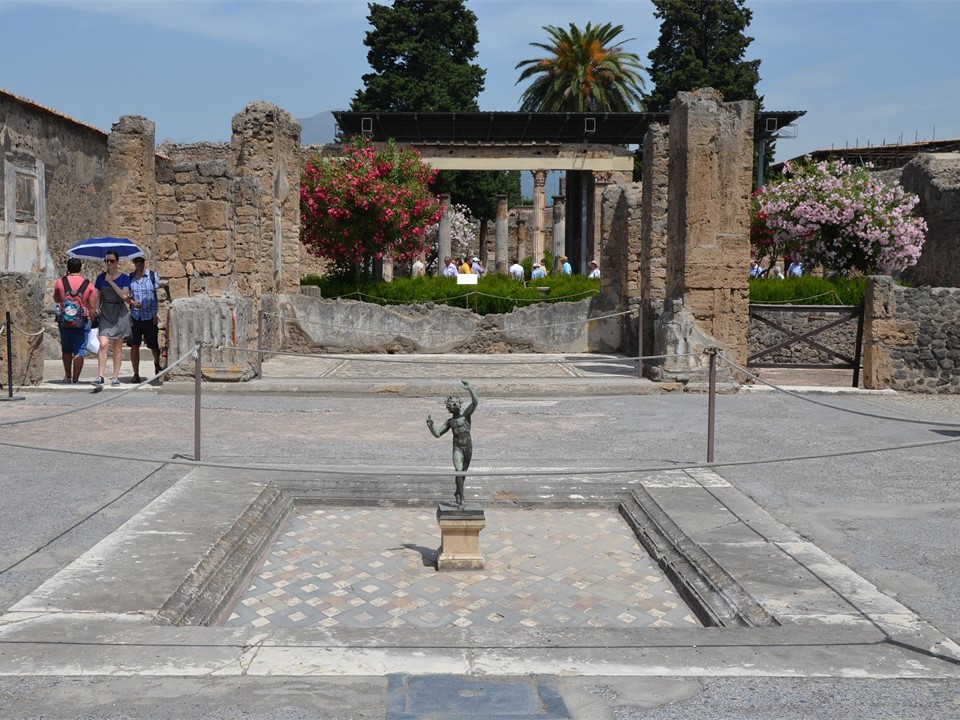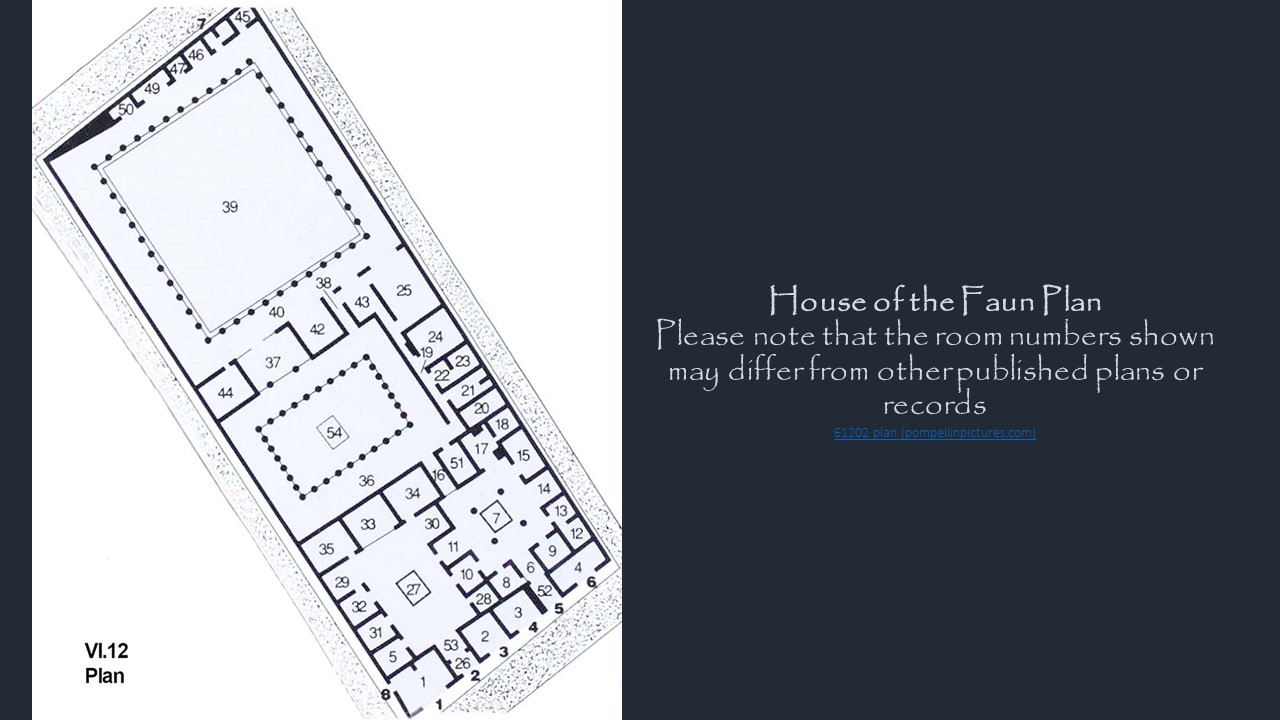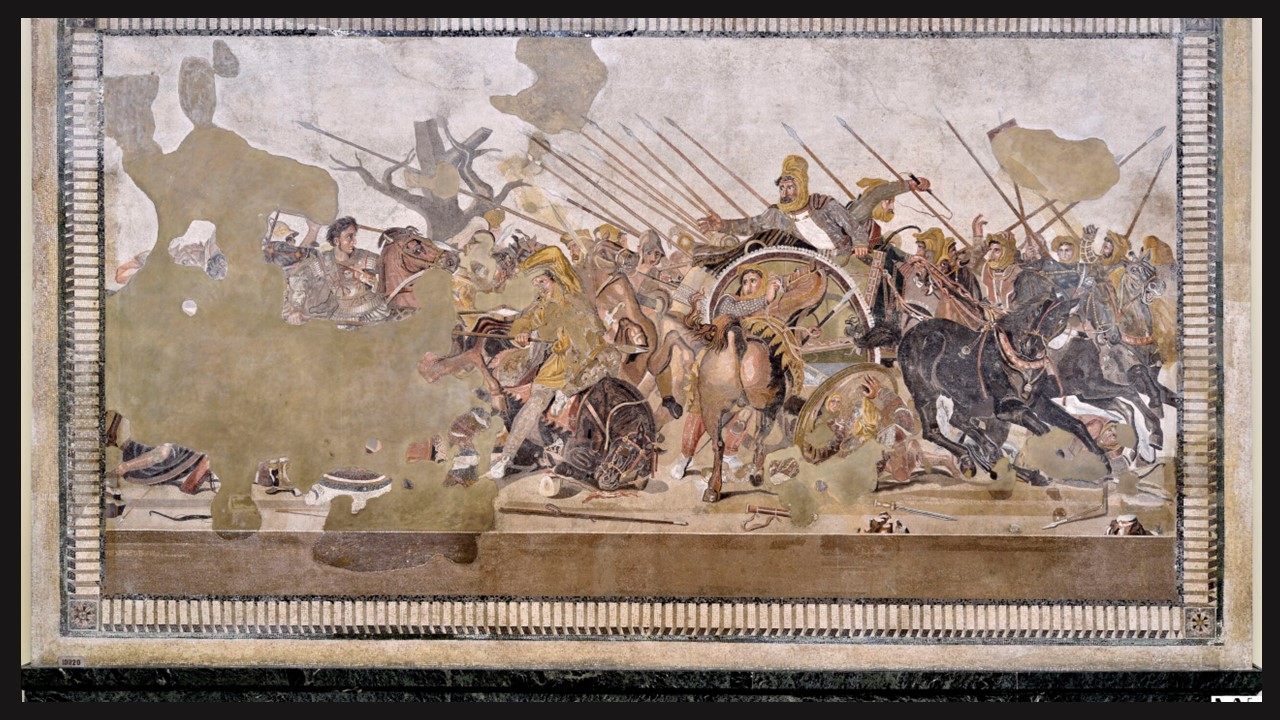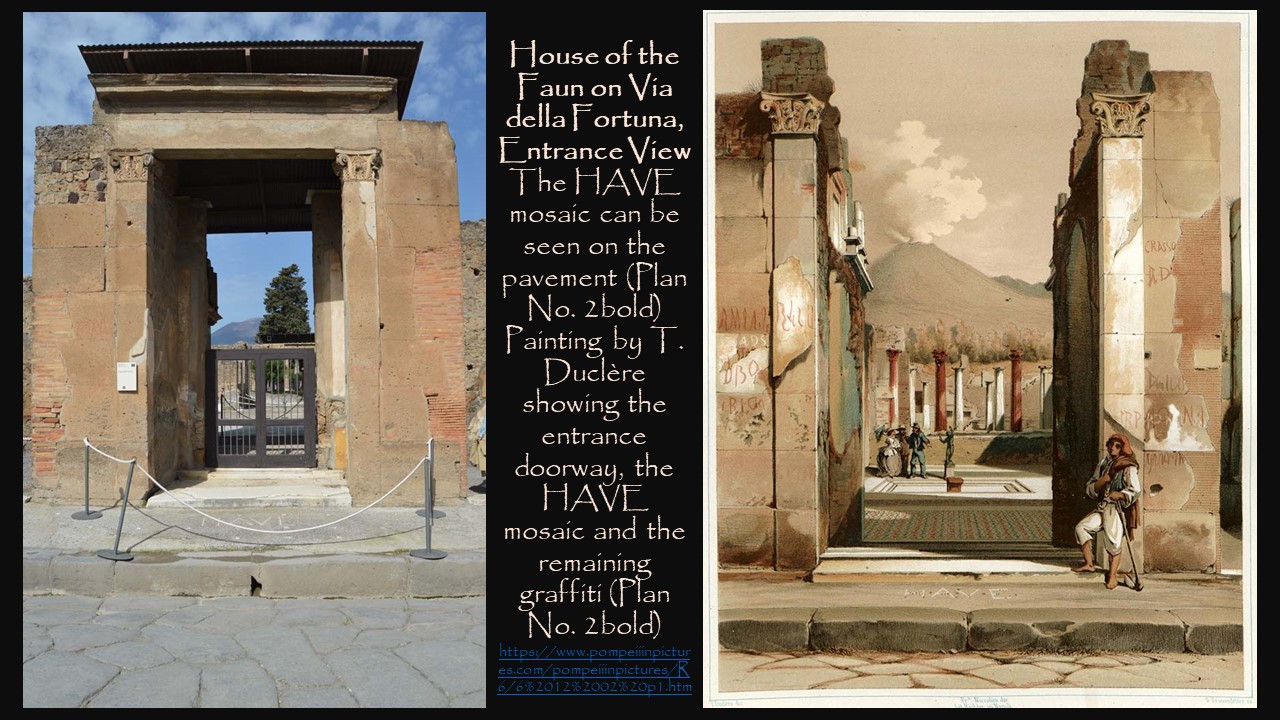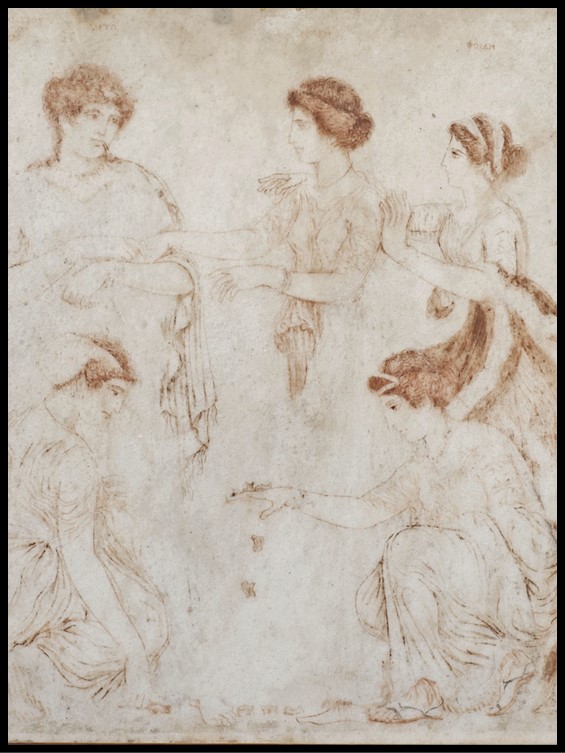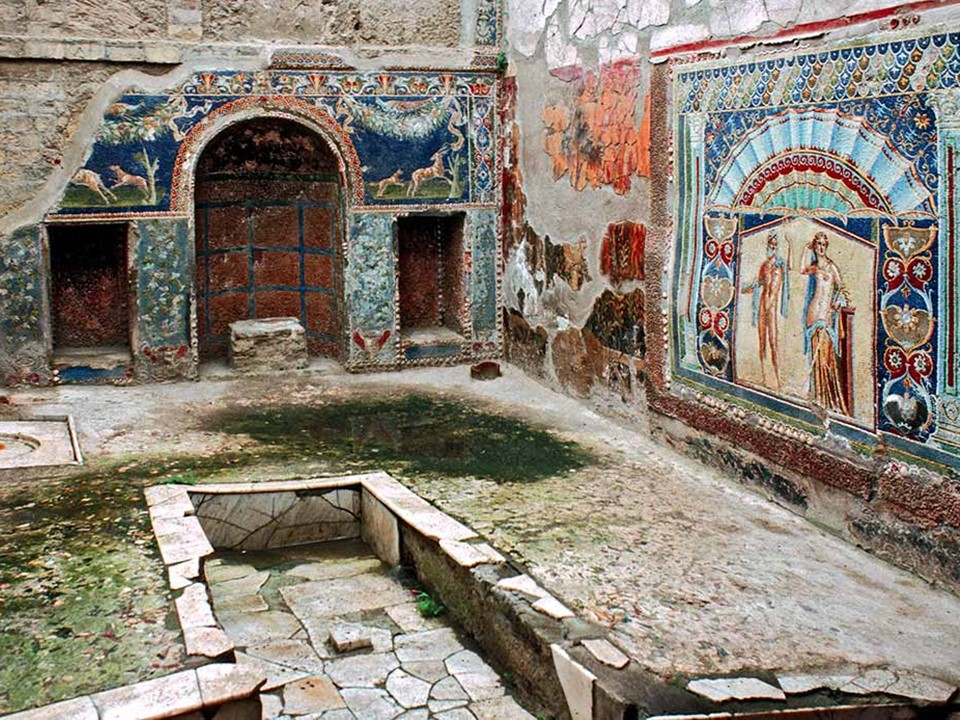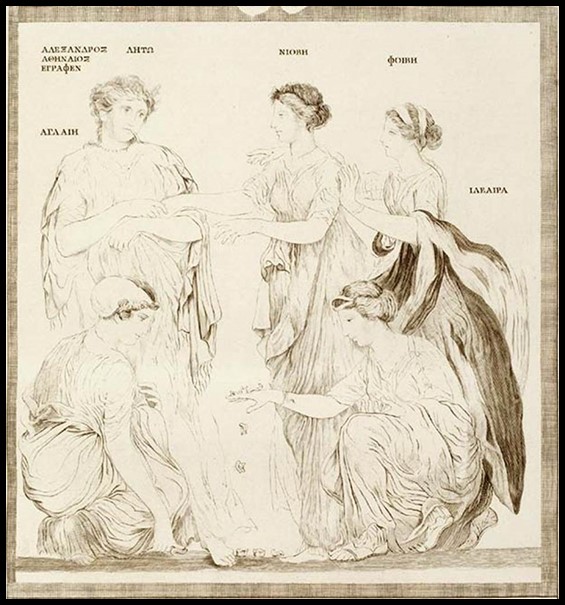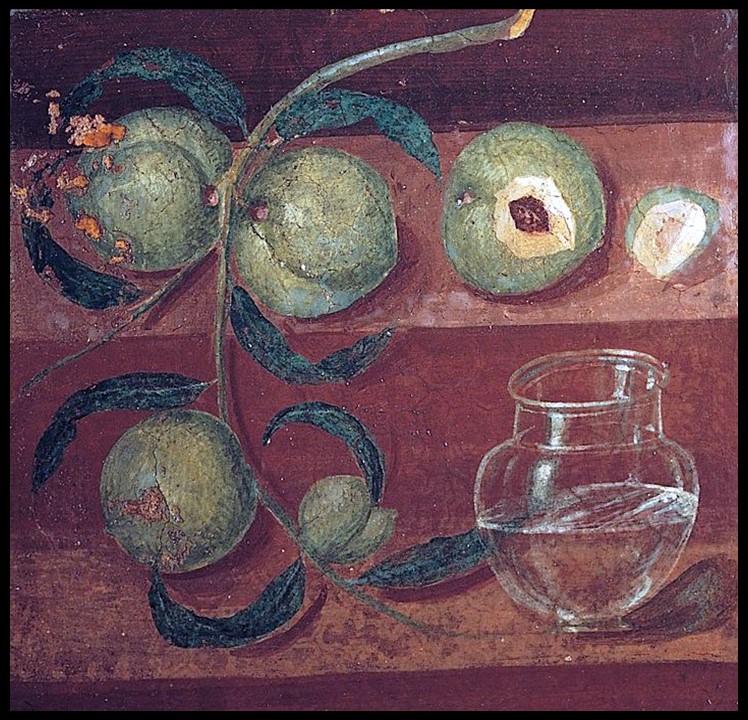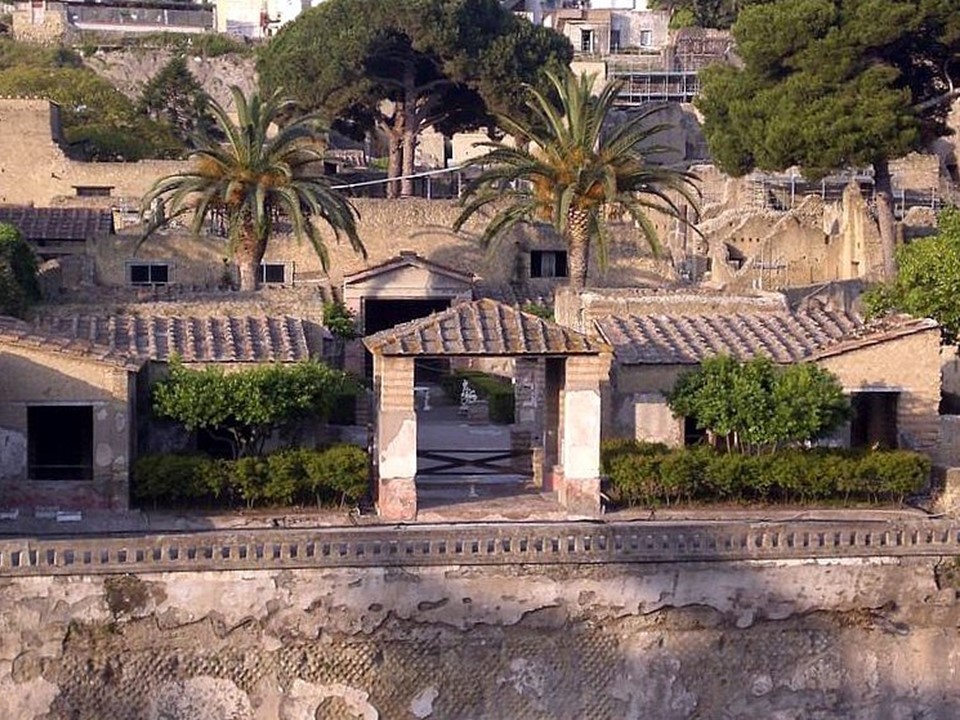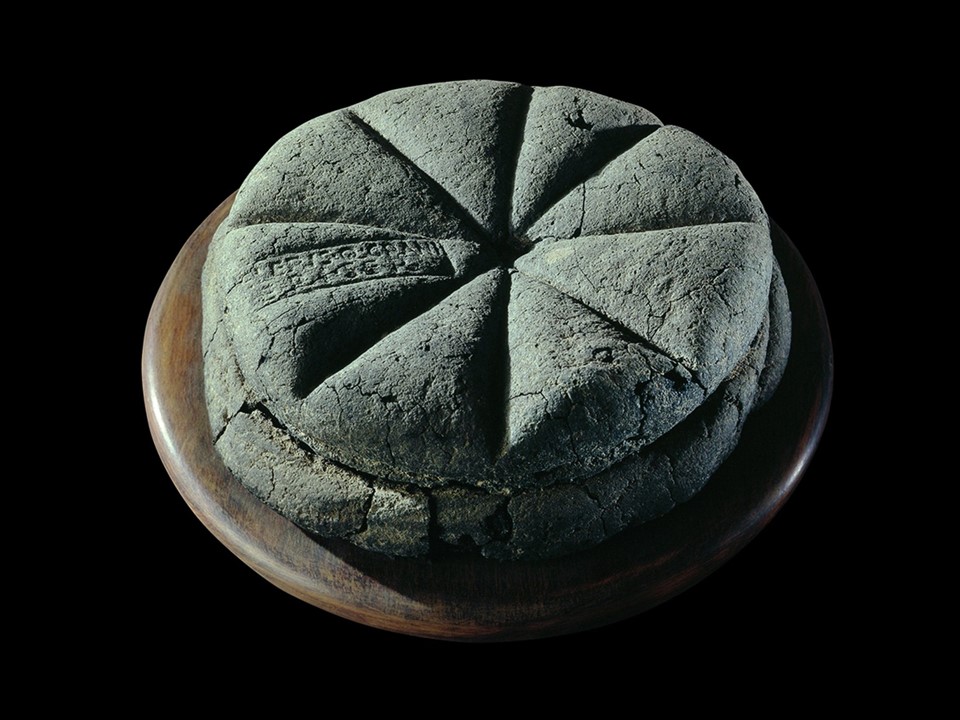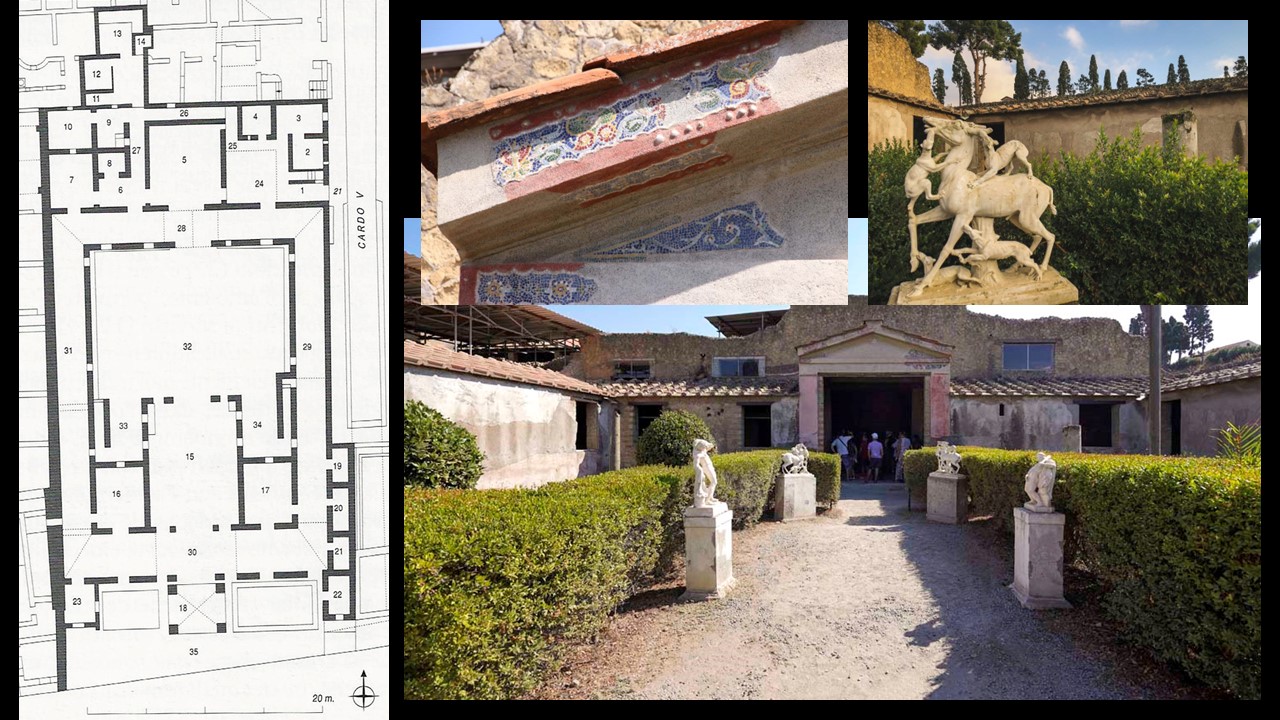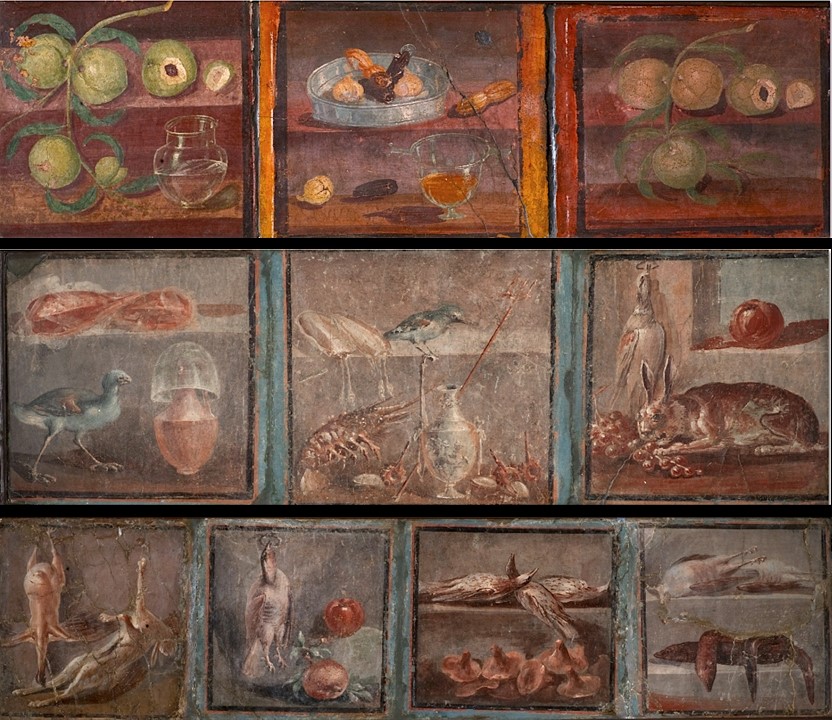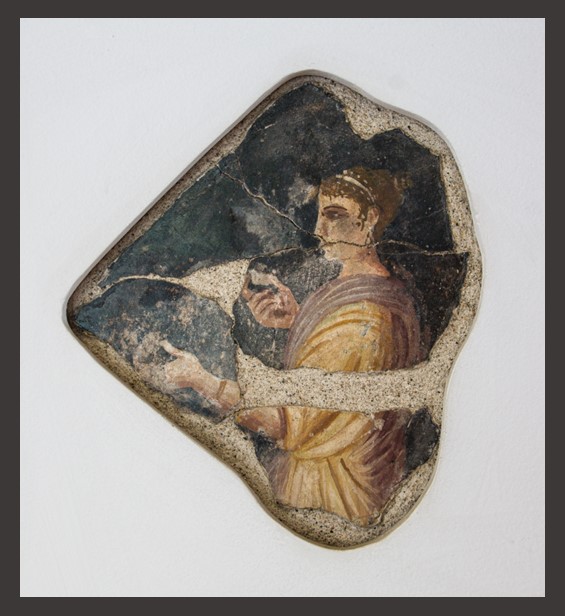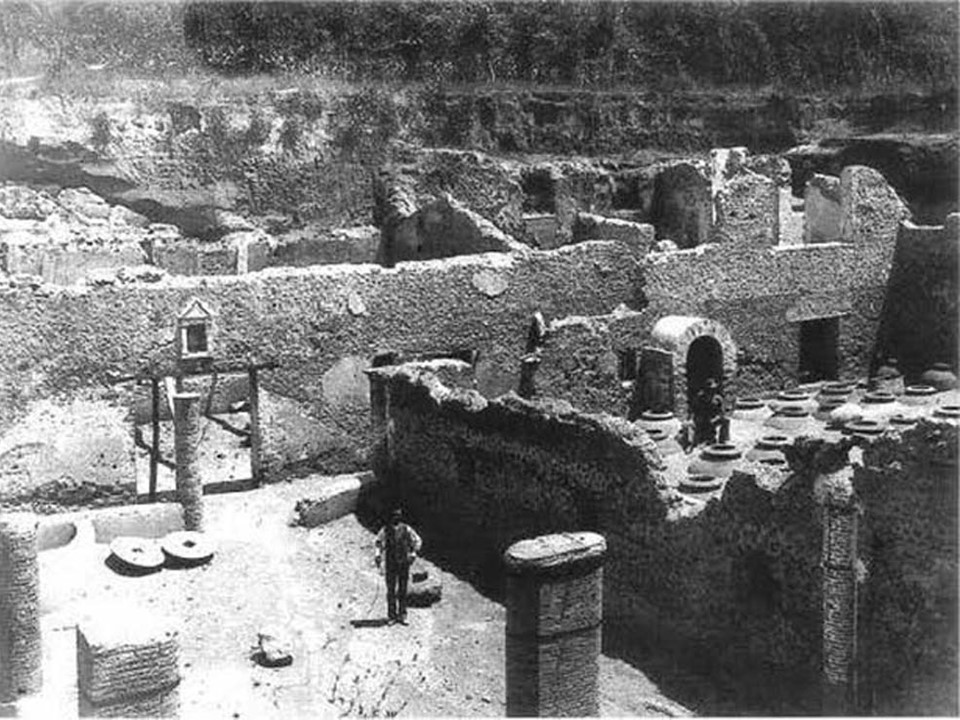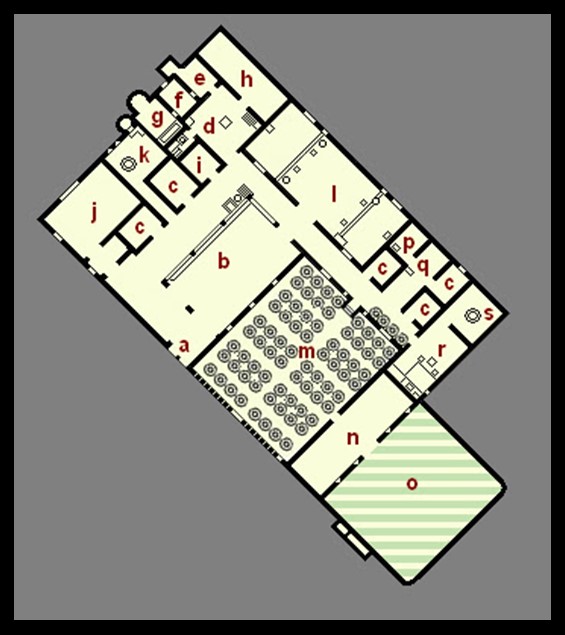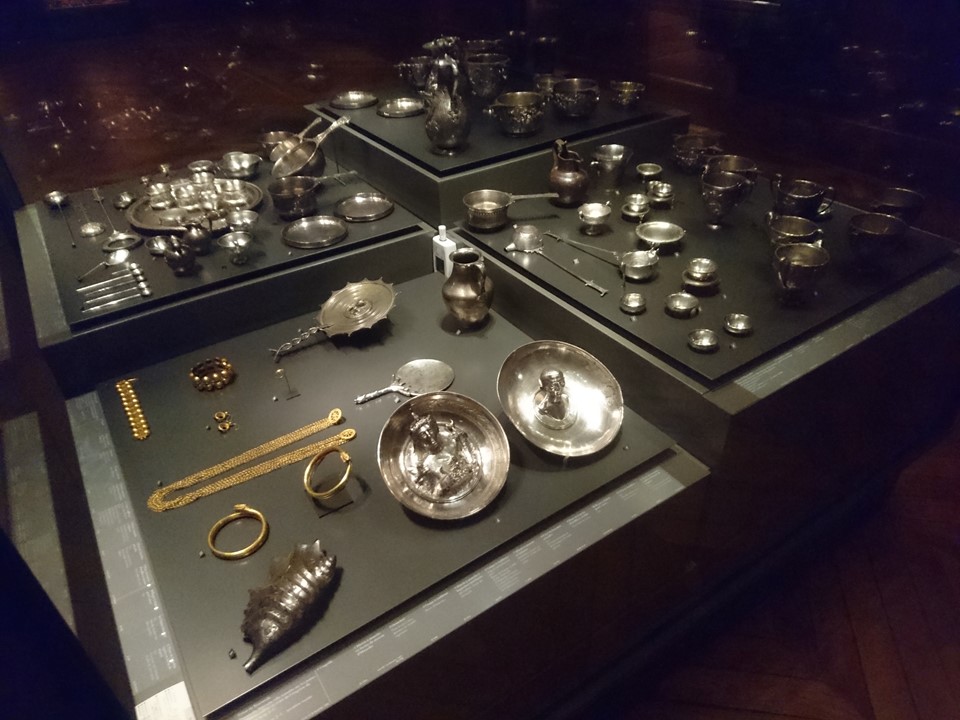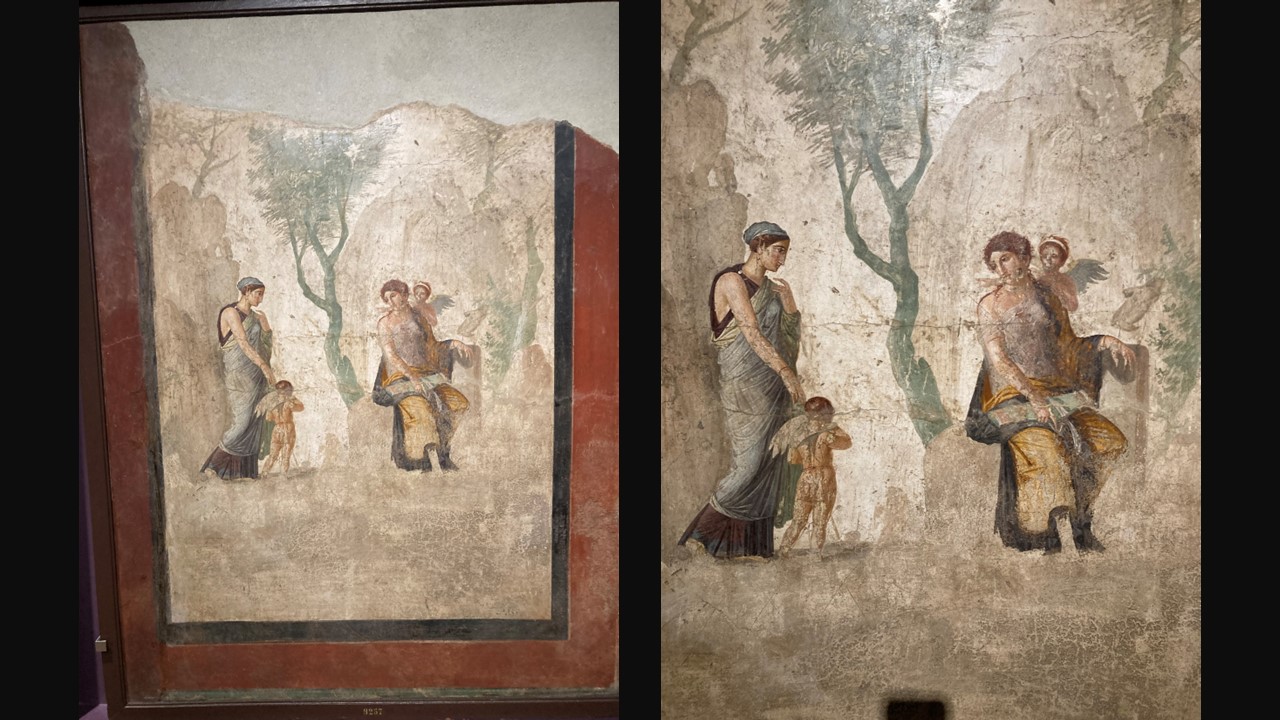
On February 17, 2024, in Athens, attending an exceptional exhibition, titled ‘NοΗΜΑΤΑ’: Personifications and Allegories from Antiquity to Today, held at the Acropolis Museum, I came face to face with an adorable Pompeiian fresco titled Eros Punished. It is now part of the Museo Archaeologico Nazionale di Napoli, but back in the 1st century AD, adorned the wall of a triclinium in the House of Love Punished in Pompeii.
The fresco’s narrative unfolds amidst the timeless strokes of fine ancient artistry. Peithò, (Persuasion Personified), leads Eros to his mother Aphrodite, terribly crossed with him, for an impending punishment. Eros used his arrows to kindle Ares’s passion for another woman, and Aphrodite is unwilling to forgive such mischief. Peithò, Persuasion personified, affectionately holds Eros’s hand, who bearing the weight of his misdeed, seems like crying, hesitant to proceed. Aphrodite, seated regally upon a rugged perch, emanates an aura of solemnity. She holds Eros’s bow and cuirass and looks at him sadly, but firmly. Anteros, the younger sibling of Eros, lurks behind her, poised to witness the unfolding consequence with a mixture of anticipation and childish delight. This tableau, frozen in time, capturing the intricate interplay of familial bonds, divine intervention, and the immutable consequences of love’s transgressions, delights me!
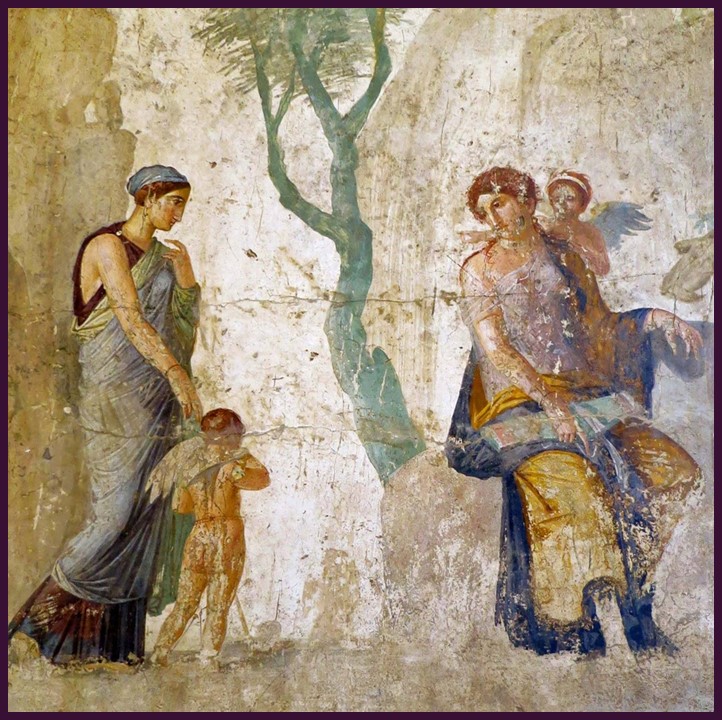
https://www.planetpompeii.com/en/blog/eros-and-anteros-the-love-needs-to-be-reciprocated-to-grow.html
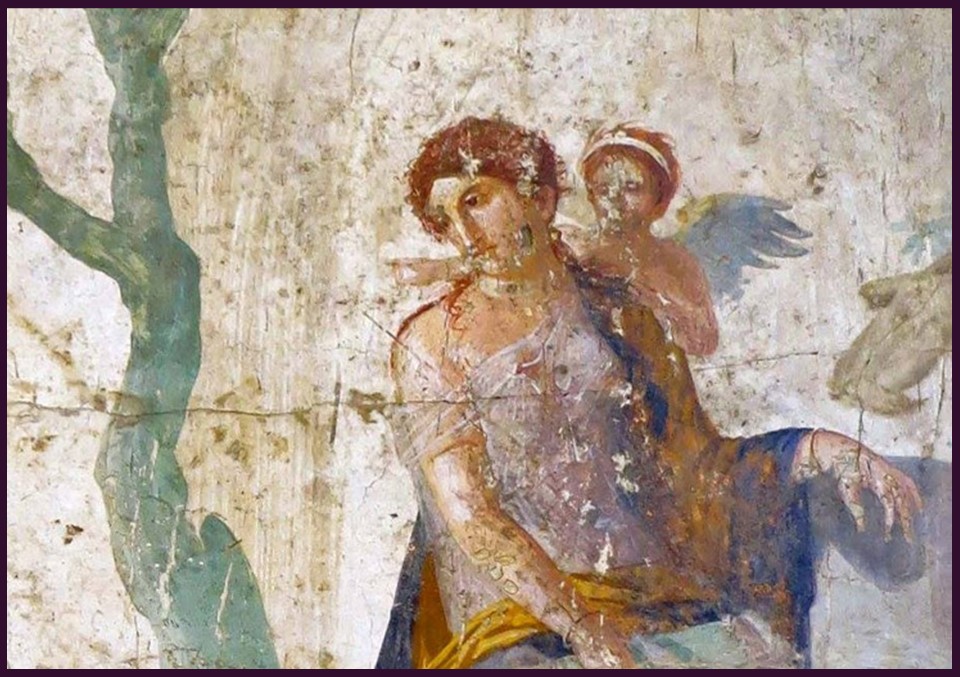
https://www.planetpompeii.com/en/blog/eros-and-anteros-the-love-needs-to-be-reciprocated-to-grow.html
In exploring this scene, I cannot overlook the intriguing presence of God Eros and his younger brother Anteros within the same composition. The relationship between Eros and Anteros, symbolizing the two counterparts of reciprocal love, finds its vivid portrayal in a fanciful myth recounted by the fourth-century rhetorician Themistius. Through Themistius’s narrative, we glimpse into the depths of brotherly affection and the profound consequences it entails…
When Aphrodite gave birth to Eros, the child was beautiful and befitted his mother in any respect but one: he did not grow to a size appropriate to his beauty… The baby’s mother and the Graces, his nurses, did not know what to do when confronted with this situation. They went to Themis… and asked her to find some means by which they might be delivered from their strange and astonishing misfortune. Themis said: “I shall put an end to your predicament. The problem is that you do not yet know the true nature of the baby. Eros, your genuine offspring, may perhaps have been born alone but he cannot grow up in any part of the body: you need Anteros if you want Eros to grow. These brothers will have the same nature; each will be responsible for the other’s growth. For when they see each other, they will both shoot up equally; but if one of them is deprived of the other, they will both shrink in size.” And so Aphrodite conceived Anteros, and Eros immediately had a spurt of growth and sprouted wings and was tall. Since this is Eros’s fortune, he often endures strange transformations, now sprouting up, now shrinking, then growing again. He always needs his brother’s presence. If he sees that his brother is of sizable stature, he is eager to appear bigger himself; but he often shrinks in size, against his own will, once he has discovered that his brother is shrunken and small.
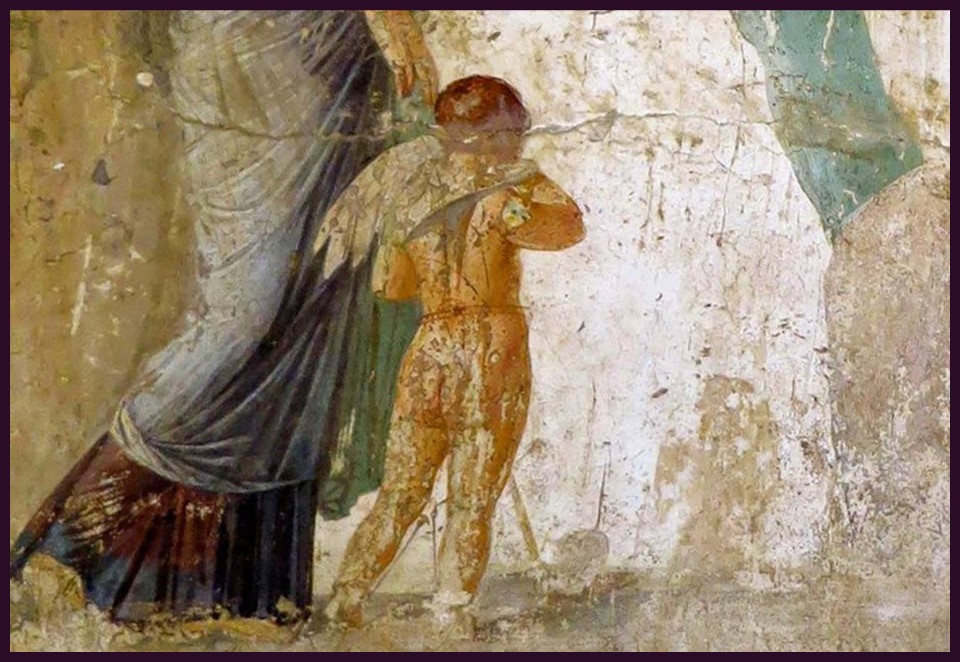
https://www.planetpompeii.com/en/blog/eros-and-anteros-the-love-needs-to-be-reciprocated-to-grow.html
For a PowerPoint on Eros and Anteros in Art, please… Check HERE!
Bibliography on Eros and Anteros: Eros and Anteros or Reciprocal Love in Ancient and Renaissance Art by Guy de Tervarent, Journal of the Warburg and Courtauld Institutes, Vol. 28 (1965), pp. 205-208 p.272 https://www.jstor.org/stable/2853330?read-now=1&seq=8#page_scan_tab_contents and Grecian and Roman mythology by Dwight, M. A. (Mary Ann), 1806-1858, p. 266 https://archive.org/details/cu31924029135651/page/n269/mode/1up and Anteros: On Friendship Between Rivals and Rivalry Between Friends p. 9 file:///C:/Users/aspil/Downloads/Post_columbia_0054D_11776.pdf
